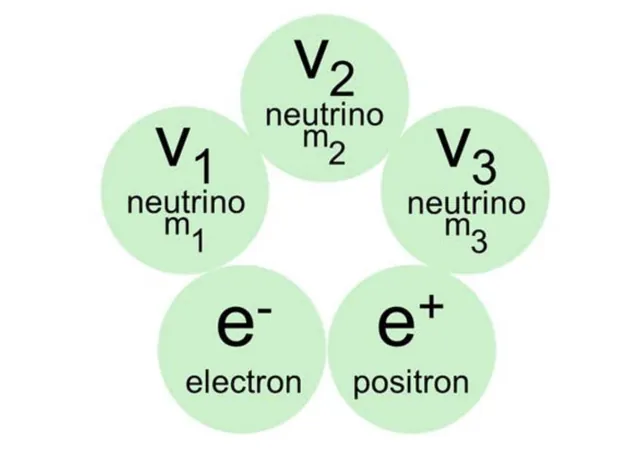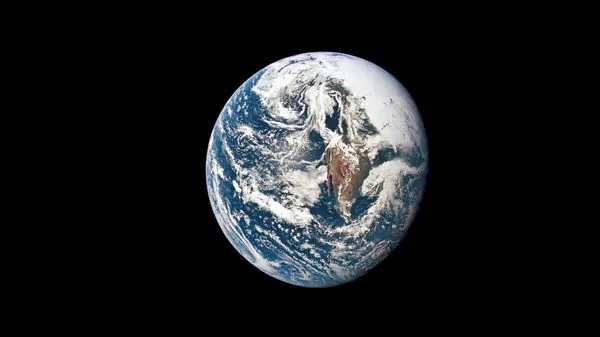
How Positron and Electron Interactions Forge the Fabric of Our Universe
2024-10-07
Author: Liam
Introduction
In a groundbreaking study led by Constantinos G. Vayenas from the University of Patras and the Academy of Athens, a novel understanding of how positrons and electrons interact with neutrinos to create the universe's mass has been elucidated. This research shines a light on the violent and exothermic reactions that catalyze the formation of hadrons—such as protons and neutrons—from neutrinos, a phenomenon previously overlooked by scientists.
Simplifying Matter Creation
Recent publications, including a comprehensive Springer Nature book, reveal the intricate details behind these reactions, positing that all hadronic matter originates from merely five elementary particles: two charged leptons (the positron and electron) and three neutrinos. This discovery simplifies our understanding of matter creation, showcasing a fundamental link between particles that were previously considered separate.
Positor-Electron Catalysis of Neutrino Hadronization
Central to this transformative process is a concept known as positor-electron catalysis of neutrino hadronization. At its core, this model explains the thermal and kinetic dynamics involved in the transformation of high-speed neutrinos into mass. The captivating revelation here is that these neutrinos, once accelerated to relativistic velocities, can generate quarks and hadrons—a process facilitated by the strong gravitational attraction amongst them.
Interaction Mechanics
The research outlines that fast-moving neutrinos act as reactants, positrons and electrons serve as catalysts, and the products of these interactions are the hadrons essential for all matter. The relativistic speeds achieved in these interactions can dramatically increase the effective mass of neutrinos, propelling them into the range of hadron masses. This mass-generation mechanism was brought to light through the Rotating Lepton Model of Elementary Particles (RLM), an innovative theoretical framework that ties together relativistic motion and quantum mechanics.
Theoretical Predictions
Through the application of established physical laws, including the de Broglie wavelength and conservation of energy, Vayenas' model predicts accurate mass values for neutrons and other hadrons. For instance, calculations yield predictions of approximately 939.565 MeV/c² for neutron mass, aligning closely with experimental findings and confirming the model's robustness.
Implications for Particle Physics
A particularly striking aspect of this study is its implications for particle physics, especially in relation to CERN's experiments. The rotating neutrinos, as detailed in the model, pave the way for understanding the formation of massive bosons, including the Z boson, in electron-positron annihilation scenarios.
Distinguishing Chemistry and Physics
Moreover, distinguishing between chemistry and physics, this research highlights that electrons, due to their greater mass and slower speeds, do not experience the same relativistic effects as neutrinos. This divergence explains the numerous complexities encountered within quantum mechanics, underscoring the unique and amplifying nature of relativistic interactions.
Conclusion
In essence, Vayenas' work not only lays a fascinating foundation for future explorations in particle physics and cosmology but also demonstrates how essential these elementary interactions are in sculpting the visible universe we inhabit. This revelation opens the door to further investigations into the fundamental mechanisms that govern the creation and behavior of matter, paving the way for potential breakthroughs in our understanding of both the micro and the macro cosmos. Stay tuned as more exciting developments unfold in the field of particle physics, revealing the unseen forces that shape our reality!









 Brasil (PT)
Brasil (PT)
 Canada (EN)
Canada (EN)
 Chile (ES)
Chile (ES)
 España (ES)
España (ES)
 France (FR)
France (FR)
 Hong Kong (EN)
Hong Kong (EN)
 Italia (IT)
Italia (IT)
 日本 (JA)
日本 (JA)
 Magyarország (HU)
Magyarország (HU)
 Norge (NO)
Norge (NO)
 Polska (PL)
Polska (PL)
 Schweiz (DE)
Schweiz (DE)
 Singapore (EN)
Singapore (EN)
 Sverige (SV)
Sverige (SV)
 Suomi (FI)
Suomi (FI)
 Türkiye (TR)
Türkiye (TR)